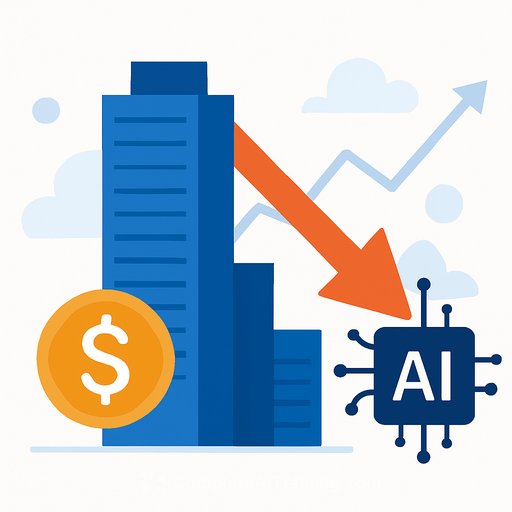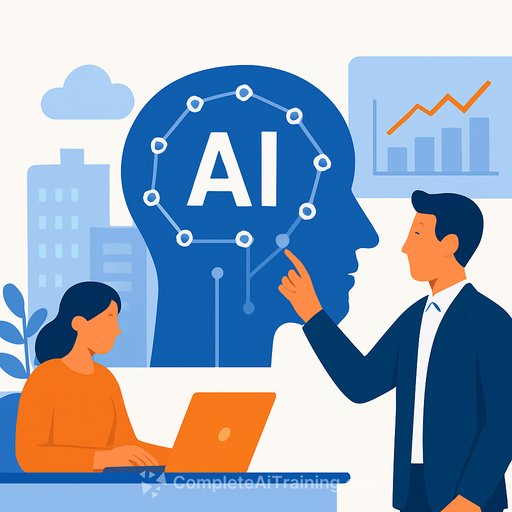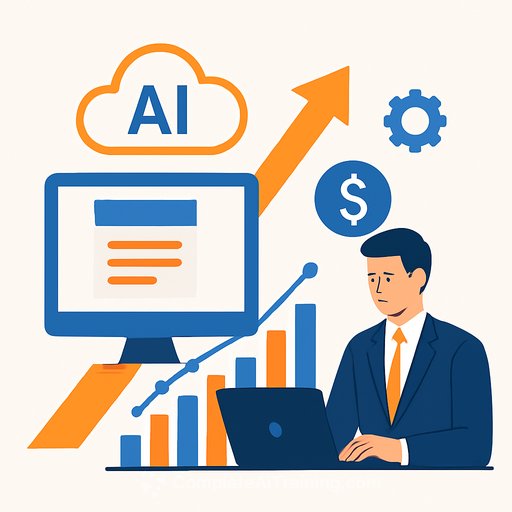AI in insurance: a reckoning and a reset
AI is changing insurance fast, but it won't delete human roles. The message from NIBA's keynote: slow down, cut the hype, and apply AI where it creates durable value for customers. Dom Thurbon of EY put it plainly - focus on outcomes that last.
"I think we should be backing investments that make the most durable and value-related difference to customers," Thurbon said. "Those that bring innovative approaches to solving their problems in new ways - or allowing us to solve them more efficiently."
Back durable value, not shiny demos
Skip the splashy pilots that don't move core metrics. Start where AI can remove friction: underwriting prep, claims triage, broker workflows, customer insights. Build around measurable lifts in speed, accuracy, and experience.
Own the use case, not the model. Models change. Your advantage is how you stitch AI into data, process, and people.
Innovation still has to pass the sustainability test
Thurbon also flagged a harder problem: the cost and durability of AI infrastructure. "There's enormous revenue coming from AI-level investment," he noted. "But I have concerns from a sustainability perspective - the infrastructure being invested in across the AI space isn't necessarily durable or affordable. The data centres, for instance, will be rendered obsolete at some point."
Yes, early investors in companies like NVIDIA have seen outsized returns. Predicting the next winner is a guess. What matters is how you apply AI in your business - not where you place speculative bets. For context on compute and energy trends, see the IEA's analysis of data center demand.
Tool, not a takeover
From the broker's side, QBE CEO Sue Houghton called AI a promising but early-stage tool. "We all got really excited - thinking we'd better start using AI for everything and that we'd all lose our jobs in two years," she said. "But if you step back, it's about what you're trying to achieve strategically and what you're doing for the customer. AI is another tool we can start to use."
The payoff is clear: better decisions, sharper risk assessment, and operational efficiencies. "It will help us make better decisions, think about the risks our customers are facing, and eventually deliver efficiencies," Houghton said. "We're just not quite there yet."
A familiar pattern
Chris Mackinnon, Regional Director for Lloyd's, has seen this movie. He compared today's AI buzz to the arrival of personal computers decades ago. "Everybody was convinced it was the end of the world - that we'd all be out of jobs," he recalled. "All it did was make us do more work. The expectations on productivity increased because of the technology, rather than replacing us."
Expect the same arc here. "It'll just mean we're doing more work - but less of the repetitive work that can be automated," he said.
What to do next: practical plays for brokers and carriers
- Prioritise 2-3 high-signal use cases: claims triage and summarisation, FNOL intake, subrogation hints, policy comparisons, underwriting pre-fill and risk notes.
- Keep a human in the loop: set confidence thresholds, route edge cases to specialists, and log decisions for audit.
- Track unit economics: token/compute spend, latency, error rates, and rework. Kill pilots that don't beat current cost to serve.
- Protect data: PII redaction, retrieval policies, and audit trails. Align with model risk management and privacy standards.
- Fix data plumbing: clean sources, document stores, and retrieval for policy, claims, and risk docs. Garbage in still equals garbage out.
- Measure business outcomes, not model scores: quote turnaround, bind rate, loss ratio impact, leakage, and customer effort.
- Avoid lock-in: use abstraction layers for model choice, watch switching costs, and negotiate data portability up front.
- Upskill teams: train brokers, underwriters, and claims leads on AI-assisted workflows. Practical options exist, including AI courses by job role.
Bottom line
AI will reward insurers who apply it to customer outcomes and sustainable operations - not those chasing headlines. Humans stay central; the work shifts from repetitive tasks to higher-value judgment. Start small, measure hard, and build what lasts.
Your membership also unlocks:






